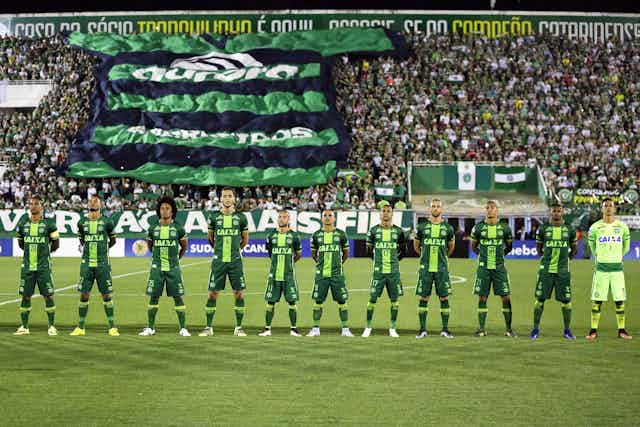The tragic crash involving a plane carrying Brazilian football team Chapecoense was not only extremely sad, it marked the latest in a long line of such incidents that have cruelly struck the sport. The Chapecoense side were the rising stars of Brazilian football and parallels have been drawn with the 1958 Munich disaster, which devastated a promising, youthful Manchester United side.
That United team had been travelling from Serbia following an international club game in Belgrade, which is ironic given that Chapecoense were flying to Medellin for a similar such game. Indeed, the team was set to appear in its first Copa Sudamericana final, against Atletico Nacional of Colombia.
The Copa is South America’s equivalent of UEFA’s Europa League, both being labelled as their respective continents’ second biggest international club tournaments. Chapecoense’s appearance in the final was supposed to have crowned a near miraculous rise for them. The club was only founded in 1973, was still stuck in Brazil’s fourth division in 2009, and only secured promotion to the top division in 2014.
Some have already made a connection between Chapecoense and Leicester City, such was the unexpected nature of the club’s success. As with last season’s English Premier League champions, Chapecoense’s players have hardly been household names. For Drinkwater and Albrighton, read Josimar and Bruno Rangel.
Going the distance
Success in football inevitably brings heavy travel demands, especially when teams qualify for international competition, or when players are called-up to play for their countries. Furthermore, the bigger the country or continent, the bigger the distances and the longer the journey times. To gauge what this means, consider that Chelsea and Manchester United alone once travelled nearly 20,000 miles for just one pre-season tournament.
Just like most teams travelling long distances by air, Chapecoense were using a plane run by a charter company. This is often the most efficient means of travel, both financially and in terms of protecting players from the inevitable intrusion of fans on a scheduled flight. However, many airline industry observers have long been concerned about safety standards in the charter industry, and clubs may in future need to address this issue more carefully.
As such, this latest accident involving a jet carrying a football team could be a watershed moment for football. Indeed, other risks associated with travelling long distances by air are multiple, which potentially poses a threat to life, to the general health and well-being of footballers, to the functioning of leagues and competitions, and arguably to the very existence of some clubs.
Preparing for the worst
In the 1957-58 season, even after the Munich tragedy, Manchester United actually managed to beat AC Milan in the first leg of a European Cup game at Old Trafford. This prompted calls from some, including eventual competition winners Real Madrid, that United should be awarded that year’s trophy. Chapecoense’s Colombian opponents Atletico Nacional have already made a similar request. Though what happens to this year’s Copa Sudamericana Final is, at the moment, open to question.
There was also speculation after United’s 1958 plane crash in Germany that the club might fold. This clearly didn’t happen. United set about rapidly acquiring players from other clubs (through a combination of loans and cut-price signings), enabling it to fulfil its fixtures for the remainder of the season. Similarly, clubs from across Brazil have rallied around Chapecoense by offering to lend the team some of their players for free so that they can do the same.
This raises an interesting further issue of how sports teams actually prepare for disaster striking. For example, in response to the prevalence of air travel for games in the US, sports leagues now have contingency plans in place to specifically account for incidents such as plane crashes. Called “disaster drafts”, measures exist in leagues such as the NBA and NFL to replace players with others from minor leagues or who are free agents.
Out of respect for those who died in the Chapecoense disaster, it may be too early to contemplate the crash’s ramifications. But, with football teams now flying large distances, it would seem that risk management and contingency planning have to play a much greater role in clubs’ travel plans. As such, it could be that the football equivalent of a disaster draft may ultimately have to be one of the Chapecoense team’s lasting legacies.

